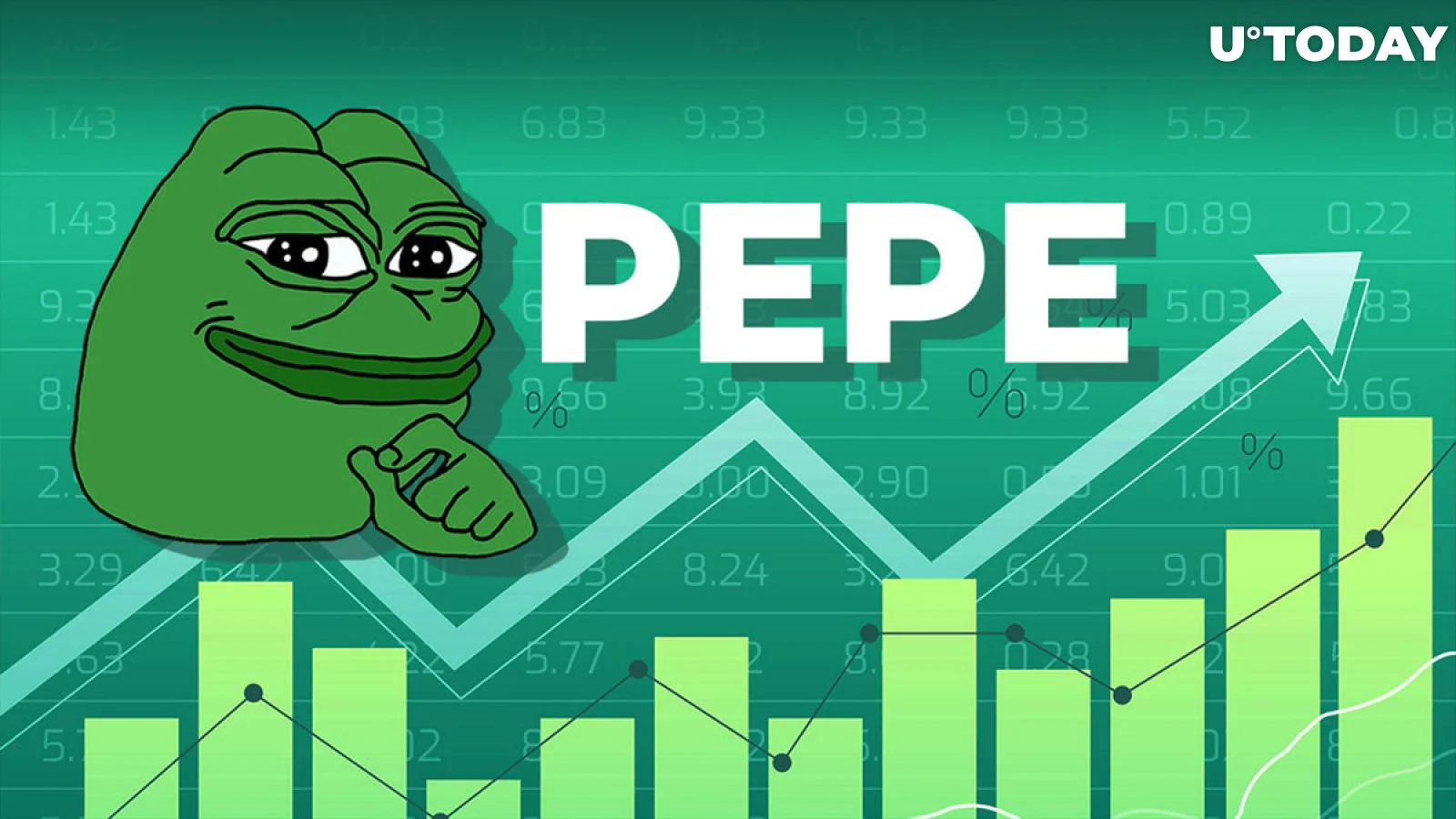
The price of Pepecoin (PEPE), an Ethereum-based meme coin based on the controversial Pepe the Frog figure, has increased by more than 43%, after Bitcoin’s recent market surge.

PEPE’s meteoric rise
PEPE, which is currently trading at $0.000002109, has attracted the interest of experts and traders due to its impressive performance. Its price has increased dramatically, but so has its trading volume, which has increased significantly by 377% to $806 million. PEPE’s market capitalization has increased by 50% to a massive $884.9 million as a result of this rush in activity.
Unexpectedly, even seasoned experts had not anticipated the spike in PEPE’s price trend. PEPE may break out of a declining parallel channel in January, according to cryptocurrency expert Ali, who also said that it would hit levels between $0.0000016 and $0.0000019. The unexpected nature of the cryptocurrency market is demonstrated by the fact that the recent spike in PEPE’s value has exceeded these projections.
The listing of PEPE on Bitstamp, one of the most established and well regulated centralised cryptocurrency exchanges, marks a significant turning point in the company’s history. Since its founding in 2011, Bitstamp has grown to have over four million users in more than 100 countries. PEPE’s listing on a respected exchange like this increases its visibility to a wider pool of prospective investors and improves its liquidity.
Bitcoin’s influence on PEPE
Even while PEPE’s ascent is remarkable in and of itself, it is taking place in the context of Bitcoin’s comeback.
The top cryptocurrency has crossed the $57,000 threshold, a level of value not seen in more than two years. On-chain data research indicates that institutional investors’ interest is expanding, which is the driving force behind this surge.
Ki Young Ju of CryptoQuant has brought attention to the amassing of Bitcoin by “whales,” or significant Bitcoin holdings. These investors have seen unrealized profits as a result of this accumulation, underscoring the attraction of Bitcoin within institutional circles and supporting experts’ optimistic forecasts of future development.


















